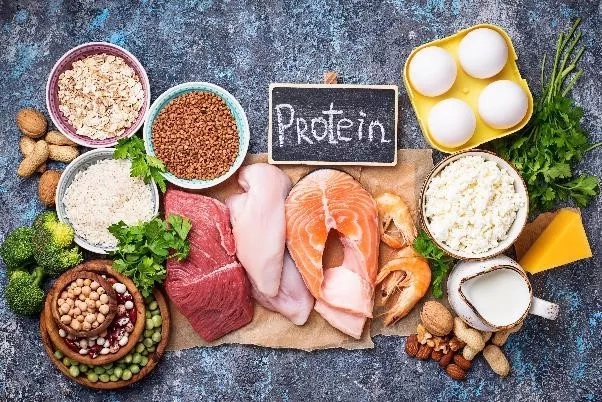Books to read when you are expecting
Books to read when you are expecting

As soon as you know you are pregnant, you may receive lots of advice from friends and family. However, not all of the advice is factually correct and reliable. For more reliable resources, you can turn to doctors, pregnancy-related websites, and pregnancy books. Nothing beats the age-old book for easy accessibility and usage. There is a wide variety of them to choose from. Most of them are authored by medical experts or experienced mothers.
Chicken soup for the expectant mother's soul
Mothers all over the world are a symbol of strength and unconditional love, and chicken soup books signify endless tales and stories of just that. As one turns the pages of the chicken soup, it takes the readers through the memory lane of the days where one can actually feel from the protagonist’s point of view. For all expectant mothers, this just might be the book to feel that strength and passion again.
You can read some excerpts from this book here.
The working woman's pregnancy book
Dr. Marjorie Greenfield draws from her experiences as an obstetrician and working mom and from more than a hundred interviews with mothers, ranging from factory workers to high-powered attorneys, to create a unique resource for working women. Dr. Greenfield's book includes checklists for multitasking working moms-to-be, helpful illustrations, stories and advice from experienced mothers, and information on everything from planning a pregnancy to balancing life after the baby is born. The Working Woman's Pregnancy Book is a great expert resource that will help any working woman through her pregnancy by giving her information, reassurance, and power.
The mother of all pregnancy books
A book for all mothers, an ultimate guide to everything and anything. Author Ann Douglas has provided an epic in its own right. She breaks down everything for you, from the day you find out you are expecting to the big day. She nails this one for everyone's fathers' and mothers' important decisions, problems, you name it, she has it all answered. There are tips on how to get your body ready for pregnancy and how to increase your chances of getting pregnant quickly. The top ten worries for each trimester—with a hefty dose of reassurance. A glossary of pregnancy and birth terms, as well as a glimpse into life after the baby is born. This book is the manual for those looking for real-world advice to help them throughout all the stages of pregnancy, from conception to birth!
You can read some excerpts from this book here.
The mother of all baby books
"The Mother of All Baby Books" is the instruction manual that Mother Nature forgot to include with the new arrival -- a hands-on guide to coping with the joys and challenges of caring for your new baby. "The Mother of All Baby Books" offers the straight goods on what it's really like to become a parent, a frank discussion of the top ten worries of new parents, the facts you need to make up your mind about breastfeeding, circumcision, immunization and other important issues, with comprehensive answers to all your baby-related questions.
Read some excerpts from the book here.
Dad's pregnant too!
This is the first book of its kind. It was written by Harlan Cohen for couples and fathers-to-be. From the first positive test, to the first time seducing your pregnant partner, to the first push, to the first week home following the birth, Dad's Pregnant Too! The book exposes and explores everything an expectant dad needs to know (but no one ever tells him). Dad's Pregnant Too! is the most comprehensive guide to help expectant fathers understand their partners, themselves, and what's really going on inside their belly.
Read some excerpts of the book here.
A child is born
Linden's long-established natural care book offers an important additional dimension. In clear, accessible language, he explains what newborn babies and small children need to harmoniously develop the full potential of body, soul, and spirit. Based on a broad perspective, he offers many practical suggestions. Beginning with the growing embryo during pregnancy, the author guides the reader through the birth; the postnatal period and breastfeeding; care of newborn babies; meals for babies; and caring for children when they are sick.
You can read some excerpts from this book here.
The unofficial guide to having a baby
Having a baby is one of life's most joyous (and overwhelming) events. The choices you make now will affect your baby's health long after he is born. How should you change your lifestyle now that you are pregnant? How can you be sure that your baby is developing properly? What should you expect at each doctor's visit? And how on earth will you survive labour? The Unofficial Guide to Having a Baby gives savvy parents-to-be like you a foolproof appraisal of what works and what doesn't—revealing things even your doctor won't (or can't) tell you, with unbiased recommendations that are not influenced by any company, product, or organization.
You can read some excerpts from this book here.
Pregnancy: the ultimate week-by-week pregnancy guide
The book presents the most up-to-date, comprehensive pregnancy guide, delivering an unforgettable visual journey of developing life. The week-by-week pregnancy format is easy-to-follow, enjoyable to read, and follows the standard development schedule used by the gynecological profession. Parents-to-be can see how their baby changes each month by looking at eight pages of amazing full-colour pictures taken while the baby is still in the womb. The exclusive interactive due-date wheel makes it easy to determine the conception date, week of pregnancy, and delivery date.
You can read some excerpts from this book here.
Love you forever
A children's book that is also a tear-jerker. That's how reviewers describe Love You Forever by Robert Munsch. This short story begins with the birth of a little boy and follows his life. All along the way, his mother rocks him and sings a simple verse. "The writing is simple and flows well from one page to the next" as we follow the growth of this child, his mother expressing her undying love for him and going to extraordinary lengths to do so. Reviewers describe Love You Forever as a "must read for all mothers and especially grandmothers." Written as a children's book but with a strong message that resonates with all parents, Love You Forever has been known to bring tears to the eyes of grown men as the parent-child relationship evolves and turns over the years.
You can read some excerpts from this book here.
Recent Blog Posts
- 28 Mar 2025
- 10 Nov 2023
- 19 Oct 2022
- 19 Oct 2022
- 19 Oct 2022
Right diet during pregnancy for an intelligent baby
Right diet during pregnancy for an intelligent baby
You can be a proud mother to the next Einstein

While a healthy baby is all most parents could ask for, studies in the area of higher intelligence have started to reveal why some babies are so incredibly smart. Have you ever wondered why there are some babies that meet developmental milestones at a very early stage? Here we are referring to babies who start walking at 9 months, draw a smiley face at 9 months, talk in long sentences at 24 months, count past ten at 24 months, etc. No one has ever been able to explain exactly why it is possible for these children to progress through their developmental milestones so much quicker than other children. And while not many are prepared to say it out loud, there are genetic studies emerging that now provide us with a glimpse of what a baby really needs to help him develop the best possible brain that he can. Simply follow these simple nutrition-based food guidelines to ensure the arrival of your bundle of joy as the "next Einstein."
Pop your prenatal vitamins

Taking your vitamins every day will help ensure that you get the balance of nutrients that your baby needs: folic acid and vitamin B12 to make red blood cells, vitamin C to produce collagen, vitamin D for bone building, and zinc for brain development.
Munch on fruits and veggies
Vegetables and fruits contain antioxidants, which are good for your baby. “Antioxidants protect the baby’s brain tissue from damage," says nutritionist Elizabeth Somer, author of Nutrition for a Healthy Pregnancy. Aim for seven servings of fruit and veggies a day. Choose deep-coloured ones for the biggest antioxidant punch: dark leafy greens, strawberries, plums, and tomatoes, for example. Do make sure to wash all fruits and vegetables well, even fruits that have a rind (as cutting them will drag germs through the flesh).
Boost proteins

Your body needs more protein right now to build cells and make hormones for your growing baby. So, increase your protein intake by an extra ten grams a day. Meat, chicken, and eggs are considered the best sources of protein. Boost your protein intake with yogurt, boiled eggs, chicken, and meat curry. Vegetarian moms-to-be can choose from soya beans, kidney beans, and lentils, as well as broccoli, cabbage, and spinach.
Pump up the iron
Your iron intake needs to double during pregnancy since iron helps to deliver life-sustaining oxygen to your baby. The trouble is, many women enter pregnancy already deficient. If your baby is deprived of oxygen in the womb, the risk of poor growth and lower IQ increases. Ask your doctor to test you for an iron deficiency. Then make sure your diet includes iron-rich foods like red meat, chicken, legumes, and fortified breakfast cereal.
Essence of copper
The nutrient copper is one of several very important nutrients for brain development, and studies have shown it to be responsible for the development of the hippocampus and dentate gyrus (the higher learning and higher thinking areas in the brain). A pregnant woman can provide her baby with sufficient amounts of copper simply by paying attention to the various foods she chooses to consume throughout the day. These foods include cashews, avocados, brown rice, eggplant, black beans, spinach, green beans, beets etc.
Choline counts

Researchers from the University of North Carolina fed two groups of pregnant mice different diets during the period when their baby’s memory, the hippocampus, develops. One group’s diet included choline, while the other did not. Examining their brain cells, researchers found the group that did not receive choline had epigenetic changes in the proteins that wrap genes in cells responsible for the creation of new brain cells. The two proteins (G9a and Calb1) that are in charge of making and maturing new neurons in the hippocampus were changed in the group that didn't get choline. Choline is found in meat, nuts, and eggs.
DHA importance
An infant's brain starts development as early as 4 weeks after conception. Therefore, the groundwork can begin even before a woman gets pregnant. That's why it's highly recommended that all women in childbearing years get plenty of omega-3 fatty acids with DHA in their diets. Researchers at the Institute of Brain Chemistry and Human Nutrition in London have revealed that low birth weight babies are born to mothers who are inadequately nourished during pregnancy. These babies have been found to be deficient in DHA. Because brain development disorders can be permanent, a good pregnancy diet must include plenty of omega-3 oils with DHA. This means eating more fatty fish like Atlantic salmon, Pacific cod fish, and tuna and supplementing with high quality, pure fish oil capsules, or both.
Be mindful of mercury
Fish is good for your baby’s brain. However, mercury contamination in some fish may be dangerous for your baby’s nervous system. The US Food and Drug Administration advises pregnant women to avoid shark, tilefish, king mackerel, and swordfish since they contain the highest levels .Some lower mercury options include salmon, catfish, tilapia, and shrimp. And if you want to eat canned fish, choose light tuna, which has less mercury than other types of fish.
Avoid alcohol and smoking

Although foetal alcohol syndrome is associated with heavy alcohol abuse during pregnancy, even moderate amounts of beer, wine, or liquor can harm a baby’s brain. Light to moderate drinking can lead to problems with learning, attention, recall, and social skills down the road. And smoking – active and passive – can retard the growth of your baby’s brain, so stay away from it.
Recent Blog Posts
- 28 Mar 2025
- 10 Nov 2023
- 19 Oct 2022
- 19 Oct 2022
- 19 Oct 2022
Things to know about having sex during pregnancy
Things to know about having sex during pregnancy

Is sex during pregnancy safe? What about when your belly and breasts get bigger? The following tips may help answer some of your questions. Here are some reasons you should keep your sensual self in high-gear during pregnancy:
- Your body is geared up for better, easier sex: increased blood flow to the pelvic area causes engorgement of the genitals and heightens sensation.

- In-utero massage, a bath of the "love" hormones oxytocin and endorphins, an improved sense of overall well-being -- all products of the orgasmic response. Why wouldn't you give these things to your baby and yourself? By taking the edge off of your exhaustion, negativity and anxieties, sex can induce feelings of calm, centeredness and gratitude which allow for greater love, creativity and success. The positive benefits of a healthy sexuality on an individual and those around them cannot be overstated.
- Strengthening the vital underpinnings of partnership, regular sexual contact between partners keeps them in tune, maintains a sense of closeness and connection and keeps you in sync. Sex increases your bond with your partner. You’re heading for a magical but stressful time so the closer the two of you are in the run-up to the birth, the better. Couples who focus on regular intimate touch and sensual intimacy communicate more lovingly and mitigate arguments more effectively.

- Hurting the baby is a common concern, but it shouldn’t be. Your baby is safe in your womb: apart from the barrier of your cervix, the amniotic sac is strong and your partner’s pennies won’t rupture it. Just assure your partner that while you may be carrying his child, you’re still his lover.
- Okay, when you are in your second trimester and if you are lucky this is the time your sickness subsides; your energy levels rise and the sex drive returns. Many women become orgasmic or multiply orgasmic for the first time in their lives during pregnancy due to hormonal response, vaso-dilation and downward pressure exerting itself on all of your sexual nerves down below.
- There are some positions which will bring bliss into your sex life while you are at it. Just try and be creative to bring that spice into your love life.

- Sex improves immunity and helps you stay healthier. Regular sex results in a 305% higher level of immunoglobulin A. This key component in your body has the ability to ward off diseases and can be enhanced dramatically by engaging in sexual activity at least once or twice a week. It can ward off heart disease, stroke, cancer and act as a natural remedy for colds and flu. Who wouldn't want to enjoy these health benefits?
- Does sex really help you get your labour started? There are some truths to the idea that semen triggers labour, although the research shows this is not a risk before term. Intercourse- or giving oral sex can be one way to induce labour if you are overdue and much more fun than an induction drip.
- What if sex isn't enjoyable? There are many physical and emotional changes during pregnancy. While some sexual relationships may improve during pregnancy, others may stagnate or suffer. The best approach is to be open with one another about your feelings, needs and expectations.

This may be an ideal opportunity to build on your sexual relationship, explore each other and find new ways of giving each other pleasure. The best way to overcome difficulties is to spend time talking. Try to build security and a feeling of closeness by focusing on your love for each other rather than just your sex life (or lack of it!). Chances are, if you feel intimate and close, satisfying lovemaking will follow. It might be a good time to indulge in a loving, sensual, and erotic massage to set the mood!
Recent Blog Posts
- 28 Mar 2025
- 10 Nov 2023
- 19 Oct 2022
- 19 Oct 2022
- 19 Oct 2022
Is older couple a problem?
Is being an older couple a problem?
By Dr. Ann Tan
Obstetrician and Gynaecologist
MBBS (S'pore), MRCOG (London), MMed (O&G), FAM (S'pore)

What is older? Is there a difference being older?
Being older is, by definition, a mother who is greater than 35 years of age at delivery. It does not matter that she or the couple have had other children before.
The older male partner also has a part to play, and the age and well-being of the father should never be overlooked.
What are the issues of being an older mother?
Shrinking egg bank
At 35 years old and above, a woman is more than likely to have used up a large part of her egg bank. She therefore has fewer chances of conception and of a live birth than her younger sisters. Not only is the number of available eggs smaller, the quality of the eggs is also in question as she is more likely to have abnormal eggs.
Increased miscarriage risk & increasing risk of abnormal babies
In the 20s, 10% of pregnancies miscarry, 15% between 30 and 34 years old, and that rises to 20% by 35 to 39 years of age, and 35% by 40 to 44 years of age. This is because the number of abnormal eggs increases with the age of the mother, thus leading to an increasing number of abnormal conceptuses, which account for the spontaneous miscarriages.
The risks of having a chromosomally abnormal baby, e.g., down syndrome, also increase exponentially after 35 years of age. The risks of Down syndrome rise from 1 in 800 at age 20 to 1 in 250 for mothers aged 35 years or older at delivery and increase to 1 in 100 at age 40.
The risks of autism and educational disabilities are also linked with the increasing age of the mother at conception.
Increased risk of medical and gynecological disorders
Being older also increases the risk of having developed other medical and gynecological issues. Common medical issues are thyroid disease, whether it is hyperthyroidism or hypothyroidism; hypertension, diabetes mellitus, or even renal or autoimmune disorders. Such medical conditions, like diabetes, can make pregnancy more difficult by increasing the risk of birth defects in the baby if they are not well controlled. If thyroid disease is poorly controlled, there could be potential damage to the foetuses’ IQ development as well. There is also a chance of having a hypertensive crisis if you have kidney disease or one of a few autoimmune diseases.
What tests are available to screen for the health of the foetus?

Maternal serum screening and other tests can give you an approximation of risk. For more certainty, tests such as chorionic villus sampling or amniocentesis can provide a firm diagnosis, which allows a woman either to terminate a pregnancy or help prepare her for the special needs her baby will have. No woman has to undergo any tests if she would rather not have this information.
There is another small but serious risk to the babies of more mature mothers. More babies die in the uterus right at the end of pregnancy in mothers aged over 40. Figures for 2006 showed that the rates of stillbirth were steady at around 5 to 6 babies per 1,000 births for women aged 20 to 39, but increased to just under 9 babies per 1,000 births for women aged 40 and above.
This increased risk cannot be explained by complications in pregnancy or other illnesses alone. For this reason, caregivers are often more vigilant about older mothers in their final weeks of pregnancy. Despite the increased risk with increasing age, it is important to remember that the vast majority of babies are fine. Figures show that, with the exception of chromosomal abnormalities, babies of older mothers don't have a higher risk of most birth defects than babies of younger mothers.
What are the advantages of being older?

Financially and mentally prepared
Being an older couple usually implies that you are financially in a better position and are mentally more prepared for the changes that a child would bring into their lives, as the pregnancy would usually be planned for. Resources for prenatal care and nutrition for the mother and her developing baby are usually better. This can only be beneficial to the health of the mother and help her start off on a better footing for motherhood.
What can one do to prepare for motherhood eventually?

Diet
Stay healthy, eat fresh foods, take prenatal supplements, and ensure adequate hydration at all times. Exercise and keep limber to ensure one’s circulation is good, as that would definitely enhance the quality of egg production.
What tests are there for the older mother?

Ensure that the annual health checks are taken and corrective measures are taken to improve the health of the prospective mother. For example, diabetes should be treated aggressively to reduce the risk of abnormal babies.
Ensure that all your vaccinations are up to date and you have good nutritional habits, as well as consume additional prenatal supplements to reduce the risk of congenital defects.
What effect does age have on the birth itself?
The older the mother is, the more likely it is that someone will step in to help. If you are over 35 years of age, you are more likely to have induced labour, an epidural, forceps or vacuum delivery. Virtually all studies agree that the rate of caesareans also rises with maternal age. This is not necessarily a bad thing, as there are always good reasons for interventions.
Does the older partner play a part?
A man who is older is more likely to get medical and physical problems, such as varicocele, urinary tract infections or stones, or prostatitis, which can hurt the quality and quantity of sperm.
Being an older male also means that his hormones are lower and his stressful lifestyle may hinder sperm production due to lower quality of life due to decreased male hormones and poorer nutrition. Do ask your partner to get a full medical checkup before the two of you plan to get pregnant.
In conclusion
At the end of the day, having a child to add to one‘s home is always a blessing. The journey of becoming a parent is always a joy, and one should always feel blessed to be a part of this journey with them through unchartered waters.
Recent Blog Posts
- 28 Mar 2025
- 10 Nov 2023
- 19 Oct 2022
- 19 Oct 2022
- 19 Oct 2022
Social induction
Social induction
By Dr. Chow Kah Kiong
MBBS (S'pore), MMed (O&G), MRCOG (UK), FAMS

What is social induction?
Social induction: an induction for the convenience of either the pregnant mother and her family or the caretaker and the medical team. It is when labour is induced "electively" and there is no clear medical reason for the induction.
The World Health Organisation (WHO) recommends that induction rates should not exceed 10% (15% at most). However, despite the possible risks of induction, many people will still desire to select the birth date of a baby.
Reasons for social induction
Individual opinions of pregnant women often vary, depending on how they perceive induction. Many welcome the intervention happily. Possible reasons are:
- Choosing a date to fit in with the woman’s work or study schedule or with the partner’s work or leave arrangements or with sibling’s childcare; also for visiting relatives.
- Feeling tired of being pregnant and wanting the pregnancy to end. Having pregnancy complaints, (such as heartburn or varicose veins) can cause the pregnancy to be uncomfortable.
- Being due around a holiday season. Some women choose to be induced before Christmas, Easter or school holidays.
- Living a long distance from the hospital, especially in isolated rural areas may consider induction to avoid living away from home for weeks, awaiting labour or travelling long distances to birth.
- Anxiety about the baby due to a previous complication e.g. previous stillborn baby.
- The labour needs to be under controlled conditions. For example, the caregiver may suggest that a woman, who experiences a psychiatric disorder, would be better managed if the labour was planned for, and the woman was cared for, during periods of peak staffing at the hospital.
- Mother and father are ready; planned & completed their work and social schedules. This is preferred in a society where most activities are planned & scheduled. How nice when an impending child birth does not come unexpectedly and interfere abruptly your work & social schedules.
- To ensure the child is borne at a ‘decent’ time of the day when the labour and neonatal wards are well staffed and urgent laboratory, imaging and other support services are easily available.
- Allow the child to be borne on an auspicious day; making the whole family happy and adding a sense of confidence to the baby the rest of his/her life.
Possible risks of social induction
However, several possible risks have been identified and documented. For these reasons, many birth centres, hospitals, teaching institutions highly discourage social induction of labor.
- Premature baby, even if you believe your baby is term
- Failed induction and resorted to C-section
- Prolonged difficult labour
- Fetal distress (e.g. cord prolapse; hyperstimulation; long labour)
- Uterine Rupture (in the presence of previous C-section)
- Placental Abruption (sudden artificial rupture of membrane)
- Amniotic fluid embolism & Post Partum Hemorrhage
How to avoid these risks
However, several possible risks have been identified and documented. For these reasons, many birth centres, hospitals, and teaching institutions highly discourage social induction of labour.
Prematurity
Ensure correct dating of the pregnancy by:
- Taking a good menstrual history.
- Early dating with an ultrasound dating scan in the first half of pregnancy, especially in the first trimester.
- Perform an ultrasound assessment of the maturity of the placenta, prior to induction. Whenever there is a doubt on the dates of a pregnancy, avoid social induction.
C-section
Ensure a favourable cervix and absence of disproportion:
- Prior to induction, assess the cervix for favourability to induced dilatation. Cervical priming by prostaglins could help in cervices that are less favourable. However, time should be allowed for safe, gradual, monitored priming and patient’s prior agreement to call off the process when necessary.
- Baby should be assessed to be not disproportion to mother’s pelvis. Avoid inducing presentations other than cephalic and the head is fully engaged.
Prolonged difficult labour
To avoid this risk, ensure the following:
- A cervix should be assessed to be favourable or easily primed.
- Use of oxytocin drip early to ensure good regular uterine contractions.
- Continuous monitoring of labour with CTG.
- Artificial rupture of membranes only when uterine contractions are established, so that labour induction could be called off.
Fetal distress
Avoid this by ensuring:
- CTG assessment of baby prior to induction, including and not limited to an admission CTG test.
- Artificial rupture of membrane only when the head is well applied to avoid cord prolapse.
- Continuous CTG monitoring of labour.
- Prior agreement to call off induction and/or accept intervention by C section.
Uterine rupture
Ensure the following:
- Avoid social induction for previous C-section and other significant uterine surgery especially myomectomy and major corrective surgery for uterine malformation.
- Continuous CTG monitoring of labour.
- Avoid hyper stimulation with oxytocics.
Placental abruption
This is a rare complication of induction. However, the presence of excessive amniotic fluid and a history of hypertension in pregnancy may increase this risk. Avoid rupturing the membranes on purpose as much as possible until very close to the second stage, especially if there is a lot of amniotic fluid and the mother has high blood pressure. Use of continuous CTG monitoring reveals the unregulated uterine contraction the moment the membrane is artificially ruptured. The patient and family are prepared for an emergency C-section.
Amniotic fluid embolisation & PPH
Many obstetricians believe that these complications are increased in induced deliveries in some ways related to the use of prostaglandins to prime the cervix, plus oxytocics to enhance the uterine contraction, plus artificial rupture of membranes, and the rapid speed of labour due to these agents. There is very little to prevent these complications, but just be prepared to treat them. We could start a syntocynon infusion immediately after the baby is delivered. Close monitoring of the patient, even up to 12 hours after delivery. Start breast feeding immediately. Keep an intravenous line for 6 hours after delivery - may need to have blood grouped and X-matched ready.
Recent Blog Posts
- 28 Mar 2025
- 10 Nov 2023
- 19 Oct 2022
- 19 Oct 2022
- 19 Oct 2022
IVF journey in the east
IVF journey in the East
By Dr. Roland Chieng
Obstetrician and Gynaecologist
MBBS (S'pore), MRCOG (UK), GDip (Acu)

What is an IVF treatment?
IVF treatment is the very first treatment tried when an egg donor is being used, there are severe cases of male infertility, or a woman’s fallopian tubes are blocked. Still, this comes after years of trying to get pregnant, followed by a slew of fertility tests. According to the World Health Organisation, incidence is about 10 percent worldwide. Another 10% to 12% of all other couples have only one child and would like to have more. The incidence of infertility is gradually increasing all over the world. For many people going through infertility treatment, the level of distress and tension can be very high. Mutual trust and faith in the doctor can help couples enquire about different types of treatment for both the male and female partner and make informed decisions about their reproductive status.
How is fertility assessment done?
For Female
Assessment of female fertility traditionally includes the assessment of ovulation and the physical condition of the fallopian tubes. Various methods are available for ovulation. The direct assessment using ultrasound to track how the egg develops in the ovaries is still the most reliable method.
Serial ultrasound visualization of the ovaries will be done to follow the development of eggs from about Day 10 of the cycle till the day of ovulation. Actual ovulation can be confirmed, and timed intercourse advice will then be more precise for a possible natural conception. “The gold standard for assessment of tubal conditions is still by laparoscopy or keyhole operation,” says Dr Roland Chieng. However, in the absence of other indications, x-ray or ultrasound assessment of the fallopian tubes is usually adequate. These can be done in a clinic setting.
1. Blood test for follicle-stimulating hormones (FSH) level at the time of menses
It dictates the amount of medication required for successful stimulation of the ovaries for egg development.
2. Antral follicular count (AFC)
This is done by a 3-D ultrasound examination of the ovaries. It has to be done on Day 2 of menstruation and measures the number of new egg follicles before stimulation is started.
3. Trail cannulation
This is a process whereby a trial run embryo transfer is done before the actual procedure.
For male
Assessment of the male is of equal importance before IVF. Full assessment goes beyond just semen analysis or sperm quality assessment. There are numerous conditions in men that are amenable to treatment, which will increase the chances of spontaneous pregnancy.
01 Semen analysis and culture
A detailed semen analysis is necessary to determine the method of obtaining sperm at the time of IVF, whether obtaining sperm normally through masturbation or surgery.
02 Sperm function test
Sperm function tests include DNA fragmentation tests, hyaluronon binding assays (HBA), egg penetration tests, and others. Infertility can be explained by these tests, and they can also show if intracytoplasmic sperm injection (ICSI) or microinjection of the sperm into the egg for fertilization in IVF is needed.
What is involved in an IVF treatment?
There are basically four steps in the IVF treatment and embryo transfer process, which include:
Step 1: Ovarian stimulation
Injections are used during ovarian stimulation to stimulate multiple eggs to grow in the ovaries instead of having a single egg that is normally produced each month. Some eggs will not fertilise or develop normally after fertilization. With multiple eggs, the chances of successful treatment become higher. With the help of an ultrasound, the follicles can be found and evaluated one by one until the right time for egg retrieval.
Step 2: Egg retrieval
Egg retrieval is a minor surgical procedure that is performed via the vaginal route. During this time, both ovaries will be enlarged with egg follicles and they will be right next to the vaginal wall. A small injection using an aspiration needle is made through the wall under ultrasound guidance. The needle is connected to a suction device.
Eggs will then be aspirated from all the follicles. Multiple eggs can be aspirated in less than 15 minutes.
Step 3: Fertilisation
Once the retrieval of eggs is completed, they are observed in the laboratory for maturity and quality. Fertilisation is achieved either through insemination, where the motile sperm are placed together with the eggs incubated overnight, or through ICSI, where a single sperm if directly injected into each mature egg. Successful fertilisation can be assessed the following day.
Step 4: Embryo transfer
Embryos are fertilised eggs. Embryo transfer is the last step in the IVF process.
One or more embryos that are floating in culture medium are drawn into a transfer catheter with a syringe on one end. The tip of the transfer catheter is guided through the cervix and into the uterine cavity, where embryos are placed.
The most important thing that leads to multiple pregnancies is the number of embryos that are transferred. Commonly, Dr Roland Chieng advises only two embryos to be transferred at any one time.
How effective is an IVF treatment?
IVF treatment is often successful, though it may take more than one try. Studies show that the potential for success with IVF treatment is the same for up to four cycles. In general, the live birth rate for each IVF cycle is 30 to 35 percent for women under the age of 35, 25 percent for women aged 35 to 37, 15 to 20 percent for women aged 38 to 40, and 6 to 10 percent for women over the age of 40.
Recent Blog Posts
- 28 Mar 2025
- 10 Nov 2023
- 19 Oct 2022
- 19 Oct 2022
- 19 Oct 2022
Pregnancy myths vs facts
Pregnancy myths vs facts

From the day people come to know about your pregnancy, you will be bombarded with well-meaning but confusing and always conflicting advice from friends, family, the annoying neighbours, and that complete stranger when you are in a department store. "Hmmm, your tummy has not gotten that large, so...", "Your face is glowing, you will definitely have a..." — the list of myths is endless. We will make your life a bit easier as we go on to break down the wall of superstition and facts so that you can enjoy a safe and enjoyable pregnancy.
Myth: Keep your feet up for nine months

Fact:
While pregnancy is definitely the time to abandon risky activities, doing light, regular exercise carries more benefits than risks. Researchers have found that women who stay active tend to have short labours, regain their pre-pregnancy shape, have a lower chance of postpartum depression, and sleep better than those who don’t exercise. However, you should also know that pregnancy is a time for maintaining your fitness routine and not taking up a new sport. Specialists believe aerobic exercise (the kind that leaves you slightly out of breath) will keep your heart and lungs healthy. Brisk walking in the morning can make a huge difference too.
According to fitness experts, light swimming is a perfect antenatal exercise. The body joints that usually soften during pregnancy are supported, and the water will keep you cool.
Myth: Whatever you eat you need to eat for two

Fact:
Okay, you're eating for two, but keep in mind that the other person you're feeding is too small, so being pregnant won't give you an excuse to double your calorie intake. As a guide, you are looking at between an extra 200 and 300 calories a day. Overeating and making the wrong food choices can lead to complications such as gestational diabetes and excessive weight gain, both of which can be harmful and can make labour more difficult. Consequently, eating well – rather than calorie counting – is the key during your pregnancy and means ensuring you eat good quality protein (eggs, meat, fish and beans). You should also be eating lots of vegetables and carbohydrates (unrefined), like brown bread, rice, etc. Good snacks include fruit, nuts (avoid peanuts), seeds, oatcakes/biscuits etc.
Myth: If you are carrying high, it's a boy

Fact:
Guessing the baby's gender is the part of pregnancy that is most full of old wives' tales. The most common myth is that boys make neat little bumps while baby girls cause the weight to spread more evenly around your abdomen — something that could seem plausible. But ideas like predicting a baby's sex by dangling a wedding ring over your belly and seeing which way it swings are surely traditional folklore. While these urban legends can be a fun way for others to get involved with your pregnancy, there's a danger they can distract from medical problems. And theories like light bleeding during pregnancy, which would indicate a boy while extreme morning sickness would signify that you are carrying a girl, are nowhere proven. While bleeding during pregnancy is common, it's always safe to check with your doctor. Even though scans aren't 100% accurate, the only way to be sure about your baby's gender is when you meet your baby.
Myth: Backaches are an unavoidable part of being pregnant

Fact:
You can avoid backaches with some simple changes. First, pay attention to your posture. Don't arch your back by pulling your shoulders back but not your abdomen. Don't wear shoes with any heel height; it will force you to arch your back, which puts pressure on the lower back. Try pelvic rocking to give your back a break, and squat throughout the day to stretch the muscles in your back.
Myth: Slow heart rate means a baby boy and a fast heart rate means a baby girl

Fact:
A normal foetal heart rate is between 110 and 160 beats per minute (bpm), although some people think if it’s faster (usually above the 140 bpm range) it’s a girl and if it’s slower it’s a boy. However, there is no evidence or statistical proof to support this theory. Your baby’s heart rate will probably differ from one prenatal visit to the next anyway, depending on the age of the fetus and activity level at the time of the visit. Also, changes in a pregnant woman's heart rate and blood pressure caused by stress, as well as long-term anxiety, can affect the heart rate of her growing baby.
Myth: You shouldn't have sex when you are pregnant

Fact:
Making love will not hurt your baby or your partner. In fact, experts encourage lovemaking during pregnancy. It will also help strengthen the bond with your partner, which you will both appreciate when the baby arrives. However, there are a few medical conditions where sex is not advised. Do consult with your doctor if you are unsure.
Myth: You can't have hot baths
Fact:
Again, a folklore that you’re not to take baths because germs could get into your vagina and be passed to the baby. This is not entirely true. When everything aches, it can be tempting to sit under a steaming hot shower or relax in a tub. Baths are a great source of relaxation and are very good for pregnant women. Avoid using too hot water or temperatures above 38 degrees Celsius. These can cause your body temperature to rise, which can cause problems for a developing baby, particularly in the first trimester. Overheating can increase the risk of neural tube defects such as spina bifida, and staying in hot water for too long can cause dehydration and dizziness in pregnant women. But your baby is definitely not in danger of getting germs from bathing as the baby remains protected by the amniotic sac and the mucous plug.
Myth: You can't get pregnant as long as you are regularly breastfeeding your baby.

Fact:
Tell this to thousands of women who are now with their second child, while the older one is hardly a year of age, or less! Hence, it is always advisable to use some form of contraception to avoid an unwanted pregnancy. Breastfeeding is reliable only up to a certain period, about one-and-a-half months after delivery. However, a woman can get pregnant even without having her first menstrual cycle post-delivery, i.e., in lactational amenorrhea. There are many simple methods available for contraception. Choose the right one for yourself.
Recent Blog Posts
- 28 Mar 2025
- 10 Nov 2023
- 19 Oct 2022
- 19 Oct 2022
- 19 Oct 2022
Preparing for your pregnancy
Preparing for your pregnancy
By Dr. John Yam Pei Yuan
Obstetrician and Gynaecologist
MBBS (S'pore), MRCOG (UK), MMed (O&G), FAMS (S'pore), FICS (USA)

You and your partner need to be ready mentally and physically before you get pregnant. You must prepare for the addition of a new member to your family.
Things to do
Pregnancy can be demanding, placing a strain on your body. It is important that you prepare in advance so that you will have a satisfying experience and outcome. Ideally, preparations should begin even before you conceive.

Folic acid supplements should be taken for about a month before getting pregnant to reduce the risk of birth defects in the brain, spine, and nervous system. If you are taking any medication, always consult your doctor as some drugs can affect your baby.
Be sure to avoid radiation (in the form of X-rays) too. Bear in mind that conception occurs around two to three weeks from your last menstrual period, so that is the time that the baby starts developing.
Eat sensibly and have a well-balanced diet. Try to keep your body mass index in a healthy range by keeping your weight in a healthy range. Women who are underweight or overweight at the start of pregnancy tend to develop specific problems during pregnancy and childbirth. Exercise moderately and avoid high-impact sports.

When you are about to embark on a pregnancy, it is a good idea to see your doctor to get a medical screen. Your doctor may screen you for various medical conditions like high blood pressure and thalassemia, an inherited blood condition that can affect the fetus. Certain tests can also be done, including blood tests to check your immunity to some conditions. A syphilis test and a PAP smear are recommended.
In the event that you need a vaccination, you will probably have to wait for a period of time before conceiving. For example, if you need a rubella vaccine, doctors recommend that you don't get pregnant for about 3 months after the shot.
On occasion, women who go for pre-pregnancy checks discover that they have certain underlying medical conditions that were previously unnoticed as they did not cause any symptoms, like high blood pressure or diabetes. It is important that they get the appropriate treatment for these conditions before starting a pregnancy, as pregnancy may be affected if their conditions are not well controlled.
Things not to do

Cigarette smoking causes problems such as miscarriage, placental bleeding, premature labour & decreased foetal weight. Babies born to mothers who smoke also suffer from delayed development. If you are a smoker, it is important that you cut down on the number of cigarettes you smoke, or, better still, stop completely. Second-hand smoke is also dangerous; if your partner smokes, avoid inhaling the fumes.
Alcohol, too, causes problems in pregnancy, including foetal abnormalities. You should avoid hard liquor during pregnancy and minimise your intake of soft liquor. Of course, it is best that you avoid alcohol together.
Recent Blog Posts
- 28 Mar 2025
- 10 Nov 2023
- 19 Oct 2022
- 19 Oct 2022
- 19 Oct 2022
The importance of eating right during your last trimester
The importance of eating right during your last trimester

By the third trimester, your impending secret cannot be hidden. You will have gained much more pregnancy weight by now, and your baby is developing at a faster rate towards your due date.
According to expert articles, there is a correlation between how much weight pregnant women gain during their pregnancy and the rate of infant mortality. As a matter of fact, women who did not gain enough weight were more prone to losing their babies within the first year of birth. Therefore, it is vital that pregnant women gain a healthy amount of weight throughout the pregnancy.
It is not too late to start eating healthy for your little one.
The variety of foods and nutrients that you eat during the last three months is crucial because it supports the continual development of your unborn baby. So, it is essential that you choose nutrient-dense foods that supply the vitamins and minerals your baby needs to grow healthy.
- Protein

It is important to have an adequate amount of protein in your diet during your last trimester. Protein helps with the growth and development of your unborn baby's tissues and muscles. Many foods, such as almonds, chicken breast, and tofu, are rich in protein and, at the same time, supply iron and zinc. Food rich in protein will not only help in the development of your baby, it can also boost your energy level.
2.Iron

Your body needs more iron to make more haemoglobin as the amount of blood in your body increases during pregnancy with the growing baby and placenta. Iron can help prevent premature delivery and low birth weight. Red meat is one of the best sources of iron for pregnant women. Besides red meat, you can get iron from legumes and grains too. Consume a variety of iron-rich foods to make sure that you're getting enough.
3.Vitamin K

During labour, it is expected that there will be blood loss, and it is crucial to prevent excessive blood loss. Vitamin K plays an important part in helping our blood clot, which is an essential vitamin for birth and breastfeeding. Dark leafy greens such as kale or rocket and berries are rich sources of vitamin K that can be found readily. So, do remember to add some of these foods to your diet.
4.Omega-3 Fatty Acids

Your baby's brain is developing at a rapid rate now, and eating food rich in omega-3 fatty acids can help to enhance your baby's brain development. Salmon, walnuts, and cauliflower are a great source of omega-3 fatty acids that promote the development of your unborn baby's nervous system. You can broil or grill the salmon for an easy-to-prepare and nutritious meal.
Your baby can tell if mommy is eating healthy or not. So be sure to eat right and stay in the pink for your little one.
Recent Blog Posts
- 28 Mar 2025
- 10 Nov 2023
- 19 Oct 2022
- 19 Oct 2022
- 19 Oct 2022
Body changes during last trimester
Body changes during last trimester

The third trimester of pregnancy is going to be your final "home stretch". Most likely, you will be feeling worn out and more emotional than usual. Nevertheless, take it slowly so you do not wear yourself out and remind yourself to stay positive because your little one will arrive in no time.
A word of encouragement is that many pregnant mothers out there are facing the same situation as you are. Having swollen feet, indigestion, constipation, or frequent urination are some of the many common body changes that you will be facing. This can be quite a shock to you, and it can make you uncomfortable at times.
However, it is more important to focus on how to overcome these body changes. Here are some tips to help you look after your body better and feel the best you can through this last lap of your pregnancy journey.
Drink up

There is no magic potion, but the benefits of water are many and plenty. It is important to drink at least 8 to 10 glasses of water per day. It improves digestion, reduces swelling, and also eases hemorrhoids. A tip is to get a 1.5-liter water bottle and leave it in your room so you do not have to go back and forth to get more glasses of water.
Strengthening of your muscles

Doing simple light exercises can also help ease body aches, labour pains, and leg cramps. Prenatal Yoga and the Kegel Exercise are useful for pregnant mothers because they help support specific muscles used during childbirth. However, if you do not want to commit yourself to anything yet, try the Kegel exercise because you can do it discreetly just about anytime and anywhere.
Managing a healthy diet

With the indigestion and constipation, munching on more fruits and vegetables will be the cure. Including foods that are high in fibre in your diet can help to ease the indigestion, and they also contain antioxidants that will protect the baby's brain tissues. Try snacking on dark-coloured vegetables and fruits from the berry family. This will ensure a healthier lifestyle for you and your little one.
Nonetheless, it is important to "listen" to your body so that you can cope with the changes better-and so can the daddy-to-be. These tips are some advice to help you have a more enjoyable pregnancy journey. Embrace this journey towards parenthood.
Recent Blog Posts
- 28 Mar 2025
- 10 Nov 2023
- 19 Oct 2022
- 19 Oct 2022
- 19 Oct 2022
Pagination
- Page 1
- Next page
